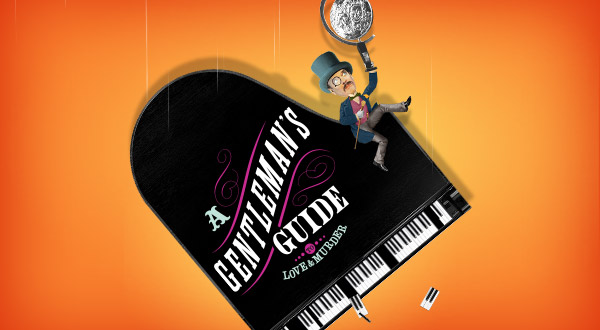“A Gentleman’s Guide to Love and Murder” has seamless performance in Minneapolis

Photo Courtesy of Hennepin Theater Trust
The relatively new Broadway musical “A Gentleman’s Guide to Love and Murder” stops at the State Theatre in downtown Minneapolis as part of its national tour.
Charming overture plays, curtain goes up, the cast members simultaneously snaps their heads to face the audience as a camera flashes, and warn the faint of heart to leave the theater through song. Even though this series of events takes place in the opening minute and a half of “A Gentleman’s Guide to Love and Murder,” it provides an accurate summary of the Tony Award-winning musical as a whole. “Gentleman’s Guide,” currently touring in Minneapolis has an incredible score (charming music), the cast kept their performance tight (synchronized head snap), the overall show leaves the audience stunned (camera flash), but isn’t everyone’s cup of tea (not for faint of heart).
After the prelude and warning of sorts, the audience discovers that Monty Navarro (Kevin Massey), soon to be protagonist, is in a prison writing a memoir titled “A Gentleman’s Guide to Love and Murder.” The musical follows how Monty got into prison, his trials and tribulations with love and murder, and then returns to the present where Monty ends up going to trial for his “crime.”
Monty first discovers his identity in the second number of the musical when Miss Shingle (Mary VanArsdel) abruptly alerts Monty that he is a member of the renowned and extremely wealthy D’Ysquith family. Monty believes that his family’s wealth might just be enough to win over the gold digger he’s madly in love with: Sibella Hallward (Kristen Beth Williams).
Only eight D’Ysquiths stand between Monty and a large inheritance, so he does the only logical thing any insane person would do, which is start murdering them off one by one. But of course, in the midst of all of the death, Monty has to go and get himself caught up in love triangle. Sibella soon marries a rich man, and Monty immediately rebounds and falls head over heals for his cousin Phoebe D’Ysquith (Adrienne Eller). It seems as if they’re like any run of the mill incestuous couple, but when love and murder on the table, any couple has to buckle up for a wild ride.
When John Rapson first walked on stage playing Asquith D’Ysquith, his performance was witty and outrageous in a perfectly contained kind of way. As the D’Ysquiths start being murdered, it soon becomes clear that Rapson just keeps coming on stage in a new costume each time playing a new D’Ysquith completely unique and completely hilarious in their own way. Portraying a grand total of nine members of the D’Ysquith family that each left the audience in stitches, John Raspson clearly stole the show. As far as vocal performances go, the cast was rock solid, and the sharp choreography and convincing movement of the cast made for an indisputably smooth and seamless production.
The set combined with the lights skillfully set the mood and sculpted specific moments and vignettes to visual perfection. For the most part, the musical took place on a smaller stage on the main stage with its own curtains and basically an electronic screen as the backdrop. While some people might say that the “stage in a stage” concept caused disconnect between the actors and the audience, I found it refreshing and a strategic way to maximize the space.
Apart from a few shaky spotlights and the line for the bathroom during intermission—completely out of the show’s control—I have nothing bad to say about “A Gentleman’s Guide to Love and Murder.” Okay, maybe it’s not for everybody, but so many people love the musical and did sweep the Tony’s, so “Gentleman’s Guide” has to be doing something right.






































![Teacher Lore: Mr. Hillman [Podcast]](https://bsmknighterrant.org/wp-content/uploads/2025/03/teacherlorelogo-1200x685.png)



